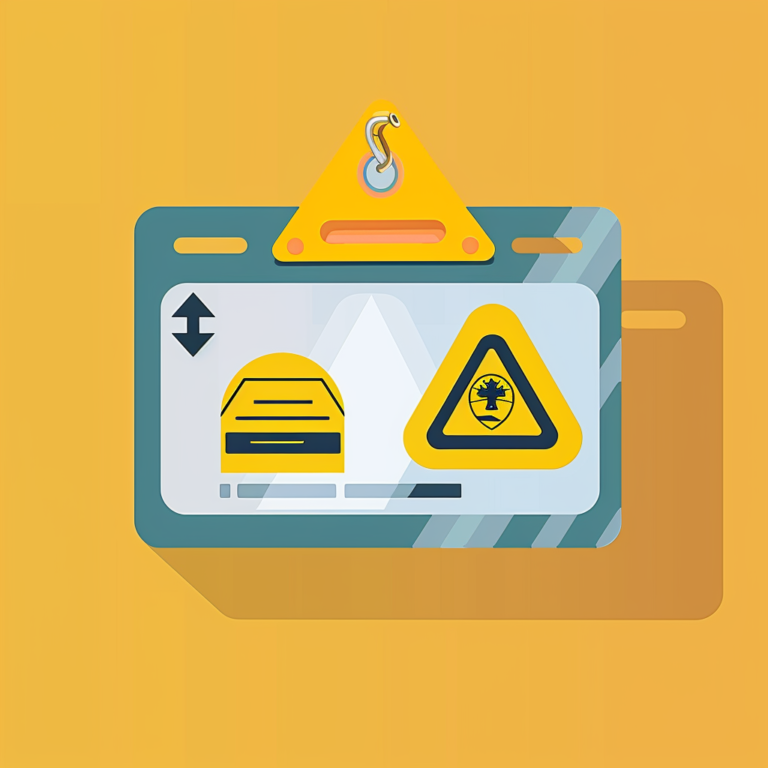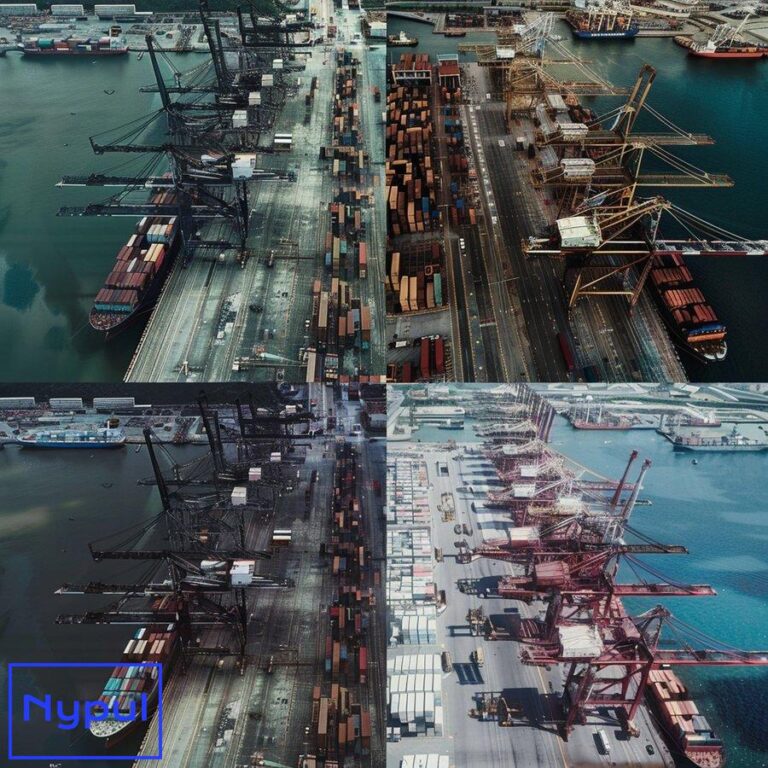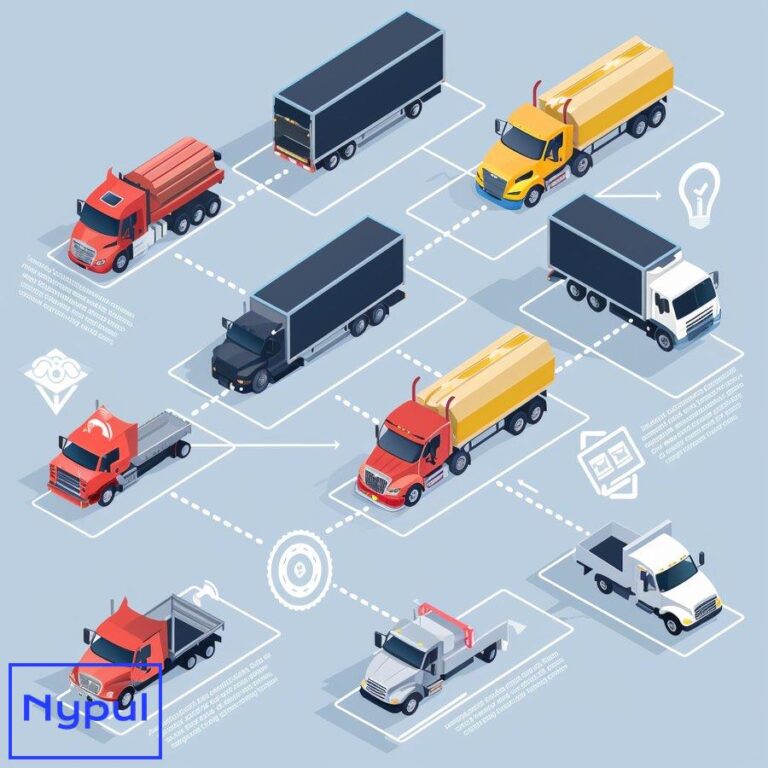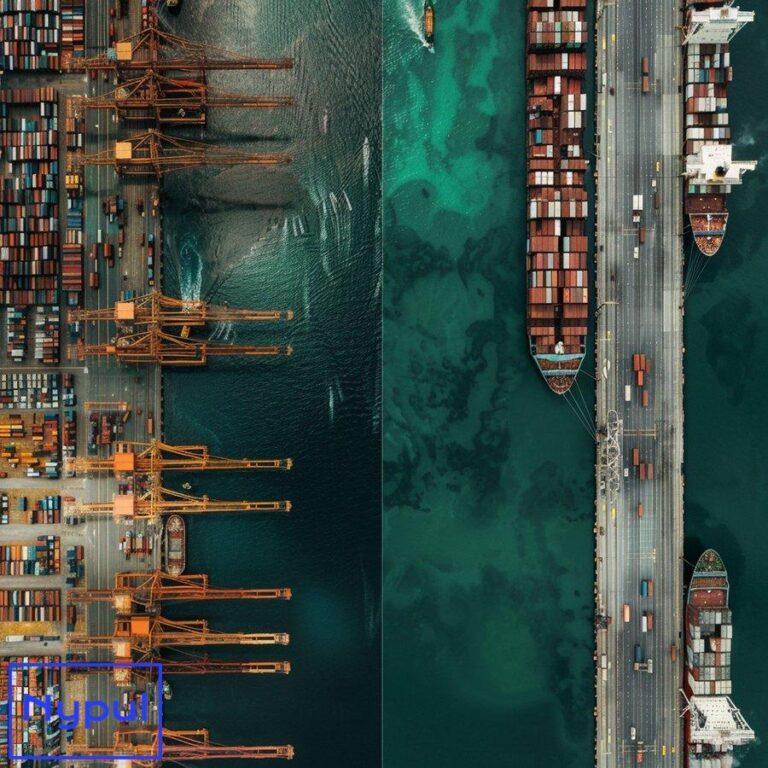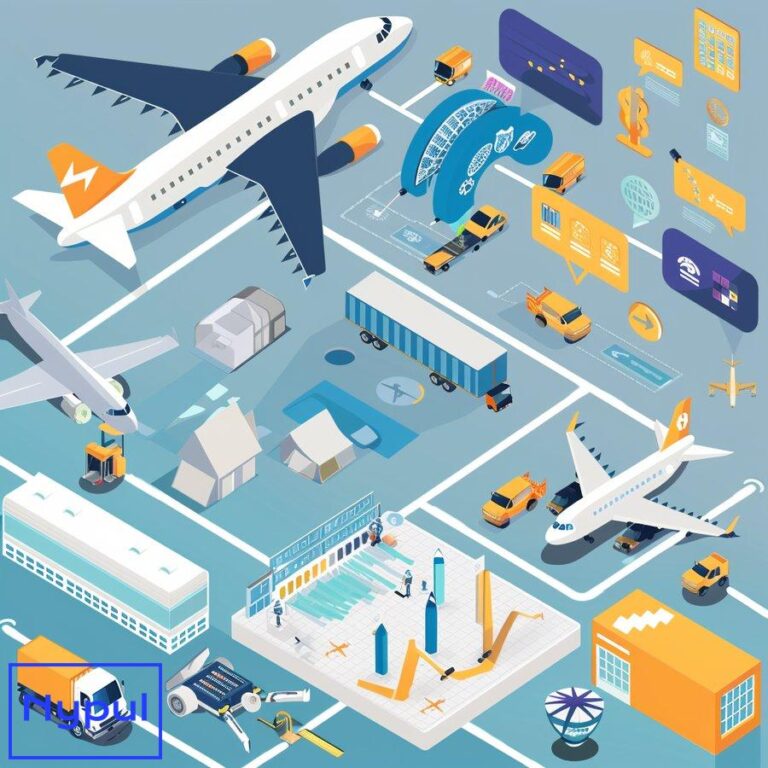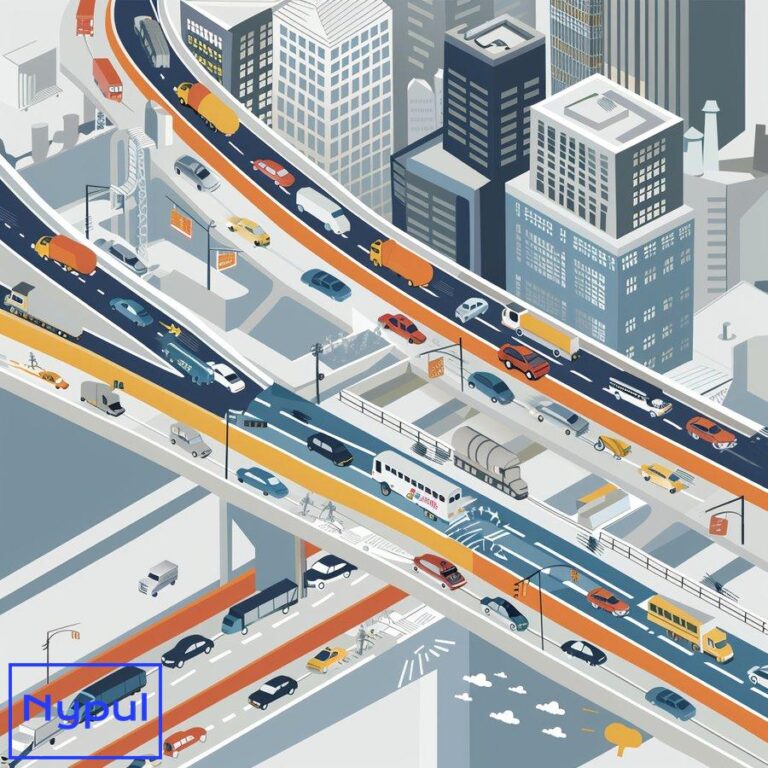What Is the Drayage Rule for Trucks in California
What is the California Advanced Clean Fleets Regulation?
The California Advanced Clean Fleets (ACF) Regulation represents a groundbreaking initiative by the California Air Resources Board (CARB) to accelerate the adoption of zero-emission vehicles (ZEVs) in the medium- and heavy-duty truck sector. This comprehensive regulation aims to significantly reduce air pollution, protect public health, and combat climate change by transitioning fleets to clean, zero-emission technologies.
At its core, the ACF regulation mandates a gradual shift towards ZEVs for various fleet categories, including drayage trucks, state and local government fleets, and federal and high-priority fleets. The regulation sets specific timelines and requirements for each fleet type, with the ultimate goal of achieving a 100% zero-emission truck and bus fleet in California by 2045 where feasible.
Key components of the ACF regulation include:
ZEV purchase requirements: The regulation establishes progressive ZEV purchase mandates for different fleet categories. For instance, state and local government fleets must ensure that 50% of their new vehicle purchases are ZEVs starting in 2024, increasing to 100% by 2027.
Drayage truck transition: A critical aspect of the ACF regulation is its focus on drayage trucks, which are responsible for transporting goods between ports, railyards, and other facilities. The regulation requires all newly added drayage trucks to be zero-emission starting January 1, 2024, with a complete transition to ZEV drayage trucks by 2035.
Manufacturer sales requirements: To support the transition, the ACF regulation also includes provisions for vehicle manufacturers. Starting in 2036, manufacturers will only be allowed to sell zero-emission medium- and heavy-duty vehicles in California.
Reporting and compliance: Fleets subject to the regulation must submit annual compliance reports and maintain detailed records to demonstrate their progress towards meeting the ZEV requirements.
The ACF regulation works in tandem with other CARB initiatives, such as the Advanced Clean Trucks (ACT) rule, which focuses on increasing the supply of zero-emission vehicles by setting ZEV sales requirements for manufacturers. Together, these regulations form a comprehensive strategy to transform California’s transportation sector and achieve the state’s ambitious climate and air quality goals.
To illustrate the phased implementation of the ACF regulation, here’s a simplified timeline of key milestones:
| Year | Milestone |
|---|---|
| 2024 | – 50% of new state and local government fleet purchases must be ZEVs – All newly added drayage trucks must be zero-emission |
| 2027 | – 100% of new state and local government fleet purchases must be ZEVs |
| 2035 | – Complete transition to zero-emission drayage trucks |
| 2036 | – Manufacturers can only sell zero-emission medium- and heavy-duty vehicles in California |
| 2045 | – Goal to achieve 100% zero-emission truck and bus fleet in California where feasible |
The ACF regulation represents a significant shift in California’s approach to reducing emissions from the transportation sector. By targeting various fleet categories and establishing clear timelines for ZEV adoption, CARB aims to create a robust ecosystem for zero-emission technologies, fostering innovation, improving air quality, and positioning California as a leader in sustainable transportation.
How are drayage trucks defined under the regulation?
Under the California Advanced Clean Fleets (ACF) regulation, drayage trucks are specifically defined to ensure clarity and consistency in implementing the new requirements. This definition is crucial for fleet operators, port authorities, and regulatory bodies to determine which vehicles fall under the drayage truck category and are subject to the regulation’s stringent emission standards.
The ACF regulation defines drayage trucks as:
Vehicle class: Class 7 and 8 trucks (gross vehicle weight rating of 26,001 pounds or more) used for transporting cargo.
Operational purpose: Vehicles that transport containerized, bulk, or break-bulk goods, empty containers, or chassis to and from ports and intermodal railyards.
Geographic scope: Trucks operating within California’s ports and intermodal railyards, or transporting goods originating from or destined for these facilities.
To provide a more comprehensive understanding, let’s break down the key elements of this definition:
Vehicle specifications:
– Gross Vehicle Weight Rating (GVWR): 26,001 pounds or more
– Engine types: Includes diesel, alternative fuel, and zero-emission powertrains
– Vehicle configurations: Encompasses various truck types, including day cabs, sleeper cabs, and specialized equipment
Operational characteristics:
– Short-haul transportation: Typically involves trips within a 100-mile radius of ports or railyards
– Frequent stops: Multiple pickups and deliveries within a single shift
– Intermodal connections: Facilitates the transfer of goods between different modes of transportation (e.g., ship to rail, rail to truck)
Excluded vehicles:
– Emergency vehicles
– Military tactical vehicles
– Dedicated use vehicles (e.g., cement mixers, garbage trucks)
– Vehicles operating exclusively at private facilities
To illustrate the diversity of drayage trucks covered by the regulation, consider the following table:
| Truck Type | Description | Typical Use |
|---|---|---|
| Day Cab | Short-haul tractor without sleeping quarters | Port to local distribution center |
| Sleeper Cab | Long-haul tractor with sleeping quarters | Port to inland destinations |
| Yard Hostler | Specialized truck for moving trailers within a yard | Within port or railyard facilities |
| Flatbed | Open truck bed for oversized or irregularly shaped cargo | Transporting construction materials or machinery |
| Container Chassis | Skeletal frame for securing shipping containers | Moving standardized containers |
It’s important to note that the definition of drayage trucks under the ACF regulation may evolve as the industry adapts to new technologies and operational models. CARB has provisions to review and update the regulation periodically to ensure its effectiveness and alignment with the state’s emission reduction goals.
For fleet operators, understanding this definition is critical for:
Compliance planning: Identifying which vehicles in their fleet are subject to the drayage truck requirements.
Fleet composition strategies: Making informed decisions about vehicle purchases and replacements to meet the zero-emission mandates.
Operational adjustments: Adapting routing and scheduling practices to optimize the use of compliant vehicles.
Reporting accuracy: Ensuring correct classification of vehicles in mandatory reports submitted to CARB.
By clearly defining drayage trucks, the ACF regulation creates a targeted approach to reducing emissions from one of the most significant contributors to air pollution in port-adjacent communities. This focused strategy aims to accelerate the adoption of zero-emission technologies in a sector that plays a crucial role in California’s goods movement and economic infrastructure.
What are the specific requirements for drayage trucks in California?
The California Advanced Clean Fleets (ACF) regulation outlines specific requirements for drayage trucks operating in the state, aiming to transition this crucial sector of the transportation industry to zero-emission vehicles (ZEVs). These requirements are designed to progressively reduce emissions and improve air quality, particularly in communities near ports and railyards.
Zero-Emission Vehicle Mandate:
Starting January 1, 2024, all newly registered drayage trucks must be zero-emission vehicles. This requirement applies to trucks being added to the CARB Online System, which is the official registry for drayage trucks operating at California ports and intermodal railyards.
Phase-Out of Combustion Engine Trucks:
Existing non-zero-emission drayage trucks registered in the CARB Online System before January 1, 2024, can continue to operate until they reach the end of their useful life. The useful life is defined as the earlier of:
– 18 years from the engine model year
– 800,000 miles on the odometer
– 13 years if the truck has already exceeded 800,000 miles
Useful Life Extensions:
In certain circumstances, CARB may grant extensions to the useful life period:
– Up to 2 years for trucks that have not reached 800,000 miles
– Up to 4 years for trucks operating less than 7,000 miles annually
Registration and Reporting Requirements:
Drayage truck owners must:
– Register their vehicles in the CARB Online System
– Report vehicle information annually, including mileage and operational data
– Maintain records for a minimum of 5 years
Operational Restrictions:
After January 1, 2024, non-compliant trucks are prohibited from:
– Accessing regulated ports and intermodal railyards
– Transporting cargo to and from these facilities
Transition Timeline:
The regulation sets a clear path for the complete transition to zero-emission drayage trucks:
– 2024: All newly added trucks must be zero-emission
– 2035: 100% of drayage trucks operating in California must be zero-emission
To illustrate the progressive implementation of these requirements, consider the following timeline:
| Year | Requirement |
|---|---|
| 2023 | Last year to register non-zero-emission drayage trucks |
| 2024 | All newly registered drayage trucks must be zero-emission |
| 2025-2034 | Gradual phase-out of older combustion engine trucks as they reach end of useful life |
| 2035 | Complete transition to 100% zero-emission drayage truck fleet |
Exemptions and Special Provisions:
The regulation includes several exemptions and special provisions to address unique circumstances:
Emergency operations: Trucks used in emergency situations are exempt from the ZEV requirement during the emergency period.
Low-use exemption: Trucks operating less than 1,000 miles per year in California may qualify for exemption from the ZEV mandate.
Infrastructure delay extension: Fleets may receive additional time to comply if they face significant delays in installing charging or refueling infrastructure.
Vehicle delivery delay: Extensions may be granted if there are manufacturer delays in delivering ordered zero-emission trucks.
Technology challenges: CARB may provide temporary relief if zero-emission truck technology is not commercially available for specific drayage applications.
These specific requirements for drayage trucks in California reflect CARB’s comprehensive approach to reducing emissions from the goods movement sector. By mandating a transition to zero-emission vehicles, setting clear timelines, and providing a structured phase-out of older trucks, the regulation aims to:
Improve air quality: Significantly reduce particulate matter, nitrogen oxides, and greenhouse gas emissions in port-adjacent communities.
Drive technology adoption: Accelerate the development and deployment of zero-emission truck technologies.
Create market certainty: Provide clear signals to manufacturers, fleet operators, and infrastructure developers about the future of the drayage sector.
Support climate goals: Contribute to California’s broader objectives for reducing transportation-related emissions and combating climate change.
For drayage truck operators and fleet managers, understanding and complying with these specific requirements is essential for maintaining operations in California’s ports and railyards. The regulation necessitates careful planning for fleet upgrades, infrastructure development, and operational adjustments to ensure a smooth transition to a zero-emission future.
How do drayage operators register and maintain compliance?

Drayage operators in California must follow a structured process to register their vehicles and maintain compliance with the Advanced Clean Fleets (ACF) regulation. This process is designed to ensure accurate tracking of drayage trucks operating at regulated ports and intermodal railyards while facilitating the transition to zero-emission vehicles.
Registration Process:
CARB Online System: Drayage operators must register their trucks in the CARB Online System, also known as the Truck Regulation Upload, Compliance, and Reporting System (TRUCRS).
Required Information: During registration, operators must provide:
– Vehicle Identification Number (VIN)
– Engine model year
– Truck make and model
– Fuel type
– Gross Vehicle Weight Rating (GVWR)
– Owner information (name, address, contact details)
Timing: New trucks must be registered before they begin drayage operations at regulated facilities.
Compliance Labels: Upon successful registration, CARB issues a compliance label that must be affixed to the truck.
Maintaining Compliance:
Annual Reporting: Drayage operators must submit annual reports through the CARB Online System, typically due by January 31st of each year.
Report Contents: Annual reports include:
– Updated vehicle information
– Annual mileage
– Operational data (e.g., number of port/railyard visits)
– Any changes in ownership or vehicle status
Record Keeping: Operators must maintain records for a minimum of 5 years, including:
– Vehicle registration documents
– Maintenance records
– Fuel purchase receipts
– GPS or telematics data (if applicable)
Compliance Verification: CARB and port authorities may conduct periodic inspections to verify compliance. Operators must be prepared to present:
– CARB compliance labels
– Vehicle registration documents
– Driver’s license and operating credentials
Updating Fleet Information: Operators must promptly report any changes to their fleet, such as:
– Addition of new vehicles
– Retirement of old vehicles
– Changes in vehicle ownership
To illustrate the key steps in the registration and compliance process, consider the following table:
| Step | Action | Frequency | Deadline |
|---|---|---|---|
| 1 | Initial Registration | Once per vehicle | Before beginning drayage operations |
| 2 | Affix Compliance Label | Once per vehicle | Immediately after receiving from CARB |
| 3 | Annual Reporting | Yearly | January 31st |
| 4 | Record Keeping | Ongoing | Maintain for 5 years |
| 5 | Fleet Updates | As needed | Within 30 days of changes |
| 6 | Compliance Inspections | Periodic | As requested by CARB or port authorities |
Strategies for Maintaining Compliance:
Designate a Compliance Officer: Assign a dedicated staff member to oversee ACF regulation compliance and manage reporting requirements.
Implement Fleet Management Software: Utilize technology solutions to track vehicle data, mileage, and maintenance records, facilitating easier reporting and compliance verification.
Regular Internal Audits: Conduct periodic reviews of fleet composition, vehicle status, and compliance documentation to identify and address any potential issues proactively.
Stay Informed: Regularly check CARB’s website and subscribe to official notifications to stay updated on any changes or updates to the regulation.
Plan for Zero-Emission Transition: Develop a comprehensive strategy for transitioning to zero-emission vehicles, including:
– Assessing current fleet composition and replacement schedules
– Evaluating zero-emission vehicle options suitable for drayage operations
– Planning for necessary charging or refueling infrastructure
Training and Education: Provide ongoing training to drivers and staff on compliance requirements, proper record-keeping, and the importance of adhering to the regulation.
Engage with CARB: Participate in CARB workshops, webinars, and stakeholder meetings to gain insights into compliance best practices and upcoming regulatory changes.
Seek Professional Assistance: Consider engaging legal or consulting services specializing in environmental regulations to ensure comprehensive compliance and navigate complex regulatory requirements.
By following these registration and compliance procedures, drayage operators can ensure they meet the ACF regulation requirements while contributing to California’s air quality and climate goals. Maintaining accurate records, submitting timely reports, and planning for the zero-emission transition are crucial steps in avoiding penalties and ensuring continued access to regulated ports and railyards.
The registration and compliance process may seem complex, but it is designed to create a level playing field for all drayage operators while providing CARB with the necessary data to monitor the industry’s progress towards emission reduction targets. Operators who proactively manage their compliance obligations are better positioned to adapt to the evolving regulatory landscape and capitalize on the opportunities presented by the transition to zero-emission technologies.
What are the key deadlines for the drayage truck rule implementation?

The California Advanced Clean Fleets (ACF) regulation establishes a series of critical deadlines for the implementation of the drayage truck rule. These deadlines mark significant milestones in the transition to zero-emission vehicles (ZEVs) and set clear expectations for drayage operators, manufacturers, and other stakeholders in the industry.
Understanding and adhering to these key deadlines is crucial for drayage operators to maintain compliance and plan their fleet transitions effectively. Here’s a comprehensive overview of the most important dates and requirements:
December 31, 2023: Final day to register non-zero-emission drayage trucks in the CARB Online System. After this date, only zero-emission vehicles can be added to the drayage truck registry.
January 1, 2024:
– All newly registered drayage trucks must be zero-emission vehicles.
– Existing non-ZEV drayage trucks can continue operating until they reach the end of their useful life.
– Drayage fleet owners must begin submitting annual compliance reports.
January 31, 2024 (and annually thereafter): Deadline for submitting the first annual compliance report under the new regulation.
2024-2034: Progressive2024-2034: Progressive phase-out of existing non-zero-emission drayage trucks as they reach the end of their useful life. This period allows operators to gradually replace older vehicles with zero-emission alternatives.
January 1, 2035: All drayage trucks operating in California must be zero-emission. This deadline marks the culmination of the transition period and the complete implementation of the ACF regulation for the drayage sector.
January 1, 2036: Manufacturers will only be permitted to sell zero-emission medium- and heavy-duty vehicles in California, reinforcing the market shift towards clean technologies.
Ongoing Compliance: Throughout this transition, drayage operators must continuously monitor their fleets, maintain accurate records, and ensure timely reporting to CARB. Regular inspections by CARB and port authorities may occur to verify compliance with the regulation.
To summarize the key deadlines for the drayage truck rule implementation, consider the following table:
| Date | Requirement |
|---|---|
| December 31, 2023 | Last day to register non-zero-emission drayage trucks |
| January 1, 2024 | All newly registered drayage trucks must be zero-emission |
| January 31, 2024 | Deadline for the first annual compliance report |
| 2024-2034 | Phase-out of existing non-zero-emission trucks as they reach end of useful life |
| January 1, 2035 | All drayage trucks must be zero-emission |
| January 1, 2036 | Manufacturers can only sell zero-emission medium- and heavy-duty vehicles |
Importance of Meeting Deadlines:
Meeting these deadlines is crucial for several reasons:
Regulatory Compliance: Failure to comply with the established deadlines can result in penalties, loss of access to regulated ports and railyards, and potential legal repercussions.
Operational Continuity: Timely transitions to zero-emission trucks ensure that drayage operators can continue their operations without disruptions, maintaining their contracts and relationships with shippers and port authorities.
Market Competitiveness: As the industry shifts towards zero-emission technologies, early adopters may gain a competitive advantage in securing contracts and attracting environmentally conscious customers.
Environmental Responsibility: Complying with the ACF regulation contributes to improved air quality and reduced greenhouse gas emissions, aligning with California’s broader climate goals and enhancing the sustainability of the transportation sector.
By understanding and adhering to these key deadlines, drayage operators can effectively navigate the regulatory landscape and position themselves for success in a rapidly evolving market.
How will the rule impact current drayage operations?
The implementation of the California Advanced Clean Fleets (ACF) regulation will have significant implications for current drayage operations. As the state mandates a transition to zero-emission vehicles (ZEVs), operators must adapt their business models, fleet compositions, and operational strategies to comply with the new requirements.
Operational Changes:

Fleet Composition: Drayage operators will need to assess their current fleet and identify which vehicles must be replaced or retrofitted to meet the zero-emission mandate. This may involve:
- Investing in new zero-emission trucks, such as battery-electric or hydrogen fuel cell vehicles.
- Evaluating the feasibility of retrofitting existing vehicles with zero-emission technologies, where applicable.
Increased Costs: Transitioning to zero-emission trucks may entail higher upfront costs compared to traditional diesel vehicles. Operators should prepare for:
- Higher purchase prices for zero-emission trucks, although these costs may decrease as technology advances and economies of scale are realized.
- Potential investments in charging or refueling infrastructure, including installation of electric vehicle charging stations or hydrogen refueling stations.
Logistical Adjustments: The shift to zero-emission vehicles may require changes in logistics and routing strategies:
- Operators may need to adjust routes to accommodate charging or refueling station locations, particularly for battery-electric trucks with limited range.
- Scheduling may need to account for longer charging times compared to traditional refueling, impacting overall operational efficiency.
Compliance and Reporting: Drayage operators will face new compliance and reporting requirements under the ACF regulation:
- Operators must register their vehicles in the CARB Online System and submit annual compliance reports detailing mileage, operational data, and vehicle status.
- Regular inspections by CARB and port authorities may occur to verify compliance, necessitating accurate record-keeping and documentation.
Impact on Workforce: The transition to zero-emission trucks may also affect the workforce involved in drayage operations:
- Training programs may be necessary to educate drivers and maintenance personnel on operating and servicing zero-emission vehicles.
- Operators may need to hire additional staff with expertise in electric vehicle technology or infrastructure management.
Environmental and Community Benefits: While the transition presents challenges, it also offers significant benefits for operators and the communities they serve:
- Improved air quality: The shift to zero-emission trucks will help reduce harmful emissions, benefiting public health and the environment, particularly in communities near ports and railyards.
- Enhanced reputation: Companies that proactively adopt zero-emission technologies may enhance their brand reputation and appeal to environmentally conscious customers and stakeholders.
To better understand the potential impacts of the ACF regulation on drayage operations, consider the following table summarizing key areas of impact:
| Area of Impact | Description |
|---|---|
| Fleet Composition | Need to replace or retrofit vehicles to meet zero-emission requirements |
| Costs | Higher upfront costs for zero-emission trucks and infrastructure investments |
| Logistics | Adjustments in routing and scheduling to accommodate charging/refueling |
| Compliance | New registration and reporting requirements, including inspections |
| Workforce | Training needs for drivers and maintenance staff on new technologies |
| Environmental | Improved air quality and enhanced community health outcomes |
Long-Term Industry Transformation:
The ACF regulation represents a significant shift in the drayage industry, with long-term implications for how goods are transported in California. As operators transition to zero-emission vehicles, the industry may experience:
- Increased collaboration with technology providers and infrastructure developers to create a robust ecosystem for zero-emission transportation.
- Opportunities for innovation in logistics and supply chain management, driven by advancements in electric and hydrogen vehicle technologies.
- A potential shift in market dynamics, with early adopters of zero-emission technology gaining a competitive edge in securing contracts and partnerships.
Overall, while the transition to zero-emission drayage trucks presents challenges for operators, it also offers opportunities for growth, innovation, and enhanced sustainability in the transportation sector. By proactively addressing the impacts of the ACF regulation, drayage operators can position themselves for success in a rapidly evolving industry landscape.
What penalties exist for non-compliance with the drayage rule?
Non-compliance with the California Advanced Clean Fleets (ACF) regulation can result in significant penalties for drayage operators. As California seeks to achieve its ambitious air quality and climate goals, the enforcement of compliance measures is critical to ensure that all stakeholders adhere to the new requirements for zero-emission vehicles (ZEVs).
Types of Penalties:
![]()
Monetary Fines: Operators found to be in violation of the ACF regulation may face substantial monetary fines. The specific amounts can vary based on the nature and severity of the violation, including:
- Fines for failing to register vehicles in the CARB Online System.
- Penalties for not submitting annual compliance reports by the established deadlines.
- Fines for operating non-compliant vehicles at regulated ports and intermodal railyards.
Access Restrictions: Non-compliant drayage trucks may be prohibited from accessing California’s ports and intermodal railyards. This restriction can severely impact an operator’s ability to conduct business and fulfill contracts, leading to financial losses and reputational damage.
Legal Action: In cases of egregious non-compliance or repeated violations, CARB may pursue legal action against operators. This could result in:
- Cease and desist orders requiring immediate compliance.
- Potential lawsuits seeking additional penalties or enforcement actions.
Increased Scrutiny: Operators who fail to comply with the ACF regulation may face increased scrutiny from regulatory authorities. This can lead to:
- More frequent inspections and audits of their operations.
- Heightened reporting requirements and oversight.
Impact on Business Operations: The consequences of non-compliance extend beyond financial penalties. Operators may experience:
- Disruption of business operations due to access restrictions or legal actions.
- Loss of contracts or partnerships with shippers and logistics providers who prioritize compliance and sustainability.
- Damage to their reputation within the industry and among customers, potentially affecting future business opportunities.
To illustrate the potential penalties for non-compliance, consider the following table summarizing key consequences:
| Type of Penalty | Description |
|---|---|
| Monetary Fines | Substantial fines for registration failures, late reporting, or operating non-compliant vehicles |
| Access Restrictions | Prohibition from accessing regulated ports and intermodal railyards |
| Legal Action | Potential lawsuits or cease and desist orders for egregious violations |
| Increased Scrutiny | More frequent inspections and audits of operations |
| Business Disruption | Loss of contracts, reputational damage, and operational challenges |
Mitigating Non-Compliance Risks:
To avoid the penalties associated with non-compliance, drayage operators should take proactive steps to ensure adherence to the ACF regulation:
Establish Compliance Protocols: Develop clear protocols for vehicle registration, reporting, and record-keeping to ensure timely compliance with all requirements.
Conduct Regular Audits: Perform internal audits to assess compliance status and identify any potential issues before they escalate.
Invest in Training: Provide ongoing training for staff on compliance requirements and the importance of adhering to the ACF regulation.
Engage with CARB: Maintain open lines of communication with CARB and participate in workshops or forums to stay informed about regulatory updates and best practices.
Plan for Zero-Emission Transition: Develop a comprehensive strategy for transitioning to zero-emission vehicles, including budgeting for new purchases and infrastructure investments.
By understanding the potential penalties for non-compliance and taking proactive measures to ensure adherence to the ACF regulation, drayage operators can mitigate risks and position themselves for success in California’s evolving transportation landscape.
How can drayage operators prepare for the transition to zero-emission trucks?
Preparing for the transition to zero-emission trucks under the California Advanced Clean Fleets (ACF) regulation requires strategic planning, investment in infrastructure, and a commitment to change. Drayage operators must take proactive steps to ensure compliance with the new requirements while positioning their businesses for success in a rapidly evolving market.
Assess Current Fleet:
Operators should conduct a comprehensive assessment of their existing fleet to identify which vehicles will need to be replaced or retrofitted. Key considerations include:
- Vehicle Age and Condition: Evaluate the age, mileage, and overall condition of each truck to determine its remaining useful life.
- Fuel Type: Identify which vehicles are diesel-powered and will need to be replaced with zero-emission alternatives.
- Operational Needs: Consider the specific operational requirements of the fleet, including load capacities and route characteristics.
Research Zero-Emission Options:
Drayage operators should familiarize themselves with the available zero-emission truck technologies and their suitability for their operations. This includes:
- Battery-Electric Trucks: Assess the range, charging times, and operational capabilities of battery-electric trucks.
- Hydrogen Fuel Cell Vehicles: Explore the feasibility of hydrogen fuel cell trucks, including refueling infrastructure and operational costs.
- Incentives and Grants: Investigate available state and federal incentives, grants, or rebates to offset the costs of purchasing zero-emission vehicles.
Develop Infrastructure Plans:
Investing in the necessary charging or refueling infrastructure is critical for supporting the transition to zero-emission trucks. Operators should:
- Identify Charging Locations: Determine where charging stations will be installed, whether at depots, ports, or along key routes.
- Assess Power Needs: Evaluate the electrical capacity required to support multiple charging stations and plan for any necessary upgrades.
- Collaborate with Stakeholders: Work with local utilities, port authorities, and other stakeholders to develop a comprehensive infrastructure plan.
Create a Transition Timeline:
Establishing a clear timeline for transitioning to zero-emission trucks can help operators manage the process effectively. Considerations for the timeline should include:
- Replacement Schedule: Develop a schedule for phasing out older trucks and integrating zero-emission vehicles into the fleet.
- Training and Education: Plan for training programs to educate drivers and maintenance staff on operating and servicing zero-emission vehicles.
- Compliance Milestones: Set specific milestones for meeting compliance requirements, such as registration deadlines and reporting dates.
Engage with CARB and Industry Groups:
Active engagement with CARB and industry organizations can provide valuable insights and resources for navigating the transition. Operators should:
- Participate in Workshops: Attend CARB workshops, webinars, and stakeholder meetings to stay informed about regulatory updates and best practices.
- Join Industry Associations: Collaborate with industry groups focused on zero-emission transportation to share knowledge and resources.
Monitor Progress and Adjust Strategies:
As operators begin the transition to zero-emission trucks, it is essential to monitor progress and adjust strategies as needed. This includes:
- Regular Fleet Evaluations: Continuously assess the performance and operational efficiency of zero-emission vehicles.
- Feedback Mechanisms: Establish feedback channels for drivers and staff to share experiences and challenges related to the transition.
- Adaptation to Market Changes: Stay responsive to changes in technology, regulations, and market dynamics that may impact the transition process.
To summarize the key steps for preparing for the transition to zero-emission trucks, consider the following table:
| Step | Action |
|---|---|
| 1 | Assess current fleet for age, condition, and operational needs |
| 2 | Research available zero-emission truck options and incentives |
| 3 | Develop infrastructure plans for charging/refueling stations |
| 4 | Create a transition timeline with replacement and training schedules |
| 5 | Engage with CARB and industry groups for support and resources |
| 6 | Monitor progress and adjust strategies based on feedback and performance |
By taking these proactive steps, drayage operators can effectively prepare for the transition to zero-emission trucks and ensure compliance with the ACF regulation. This transition not only aligns with California’s environmental goals but also positions operators to thrive in a future focused on sustainable transportation solutions.
The journey towards zero-emission drayage operations may present challenges, but it also offers opportunities for innovation, collaboration, and enhanced sustainability in the transportation sector. By embracing this transition, drayage operators can contribute to cleaner air, improved public health, and a more sustainable future for California’s communities.

